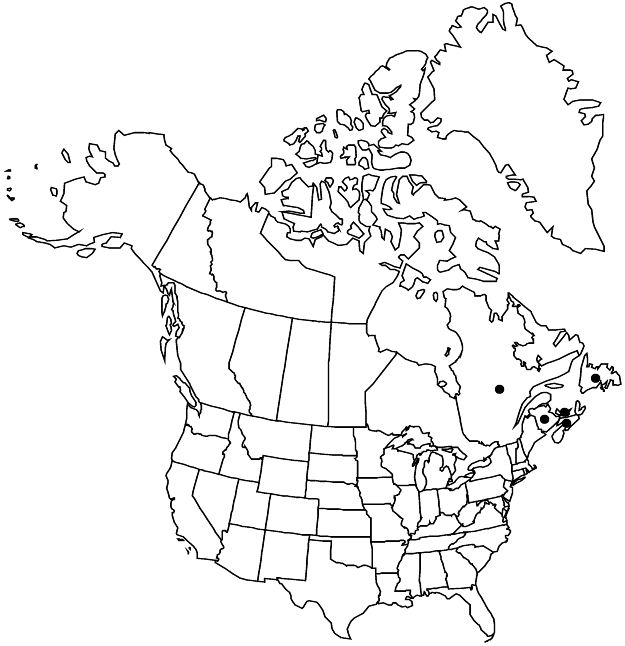Amelanchier fernaldii
Rhodora 22: 149. 1920.
Shrubs, 0.5–1 m, rhizomatous. Stems 1–50, usually forming colonies. Leaves mostly or fully unfolded; petiole 1–25 mm; blade elliptic-oblong to oblong-obovate, 50–80 × 15–45 mm, base rounded to subcordate, each margin with 4–18 teeth on proximal 1/2 and 5–10 teeth in distalmost cm, largest teeth less than 1 mm, apex subacute to rounded or mucronate, abaxial surface glabrous (or sparsely hairy) by flowering, surfaces glabrous later. Inflorescences 3–8-flowered, 20–40 mm. Pedicels: usually 1 subtended by a leaf, proximalmost 15–35 mm. Flowers: sepals ascending or spreading after flowering, 3–5 mm; petals oval to broadly oblanceolate, 8–15 × 3–6 mm; stamens 20; styles 5, length unknown; ovary apex densely hairy. Pomes dark purple or almost black, 6–10 mm diam.
Phenology: Flowering Jun–Jul; fruiting Jul–Aug.
Habitat: Ravines, thickets, barrens, rocky banks, shores, sea cliffs, swamps, wet woods, often calcareous
Elevation: 0–100 m
Distribution

N.B., Nfld. and Labr. (Nfld.), N.S., P.E.I., Que.
Discussion
The rhizomatous habit, leaves that are glabrous upon expanding, and densely hairy ovary apices in Amelanchier fernaldii are a distinctive combination of characteristics. Its relationships to congeners are unclear. Access to flowering material clearly assignable to A. fernaldii has not been available, and the size of floral parts was taken from M. L. Fernald (1950).
Selected References
None.